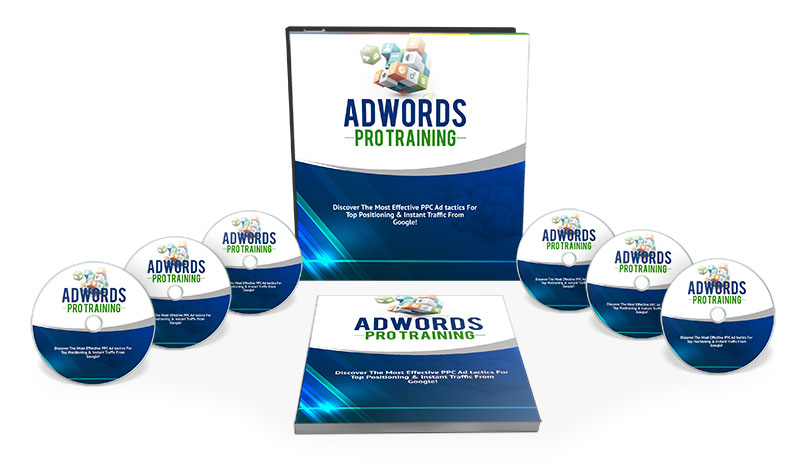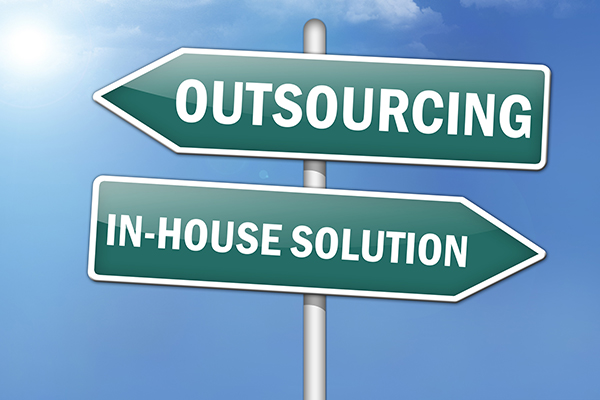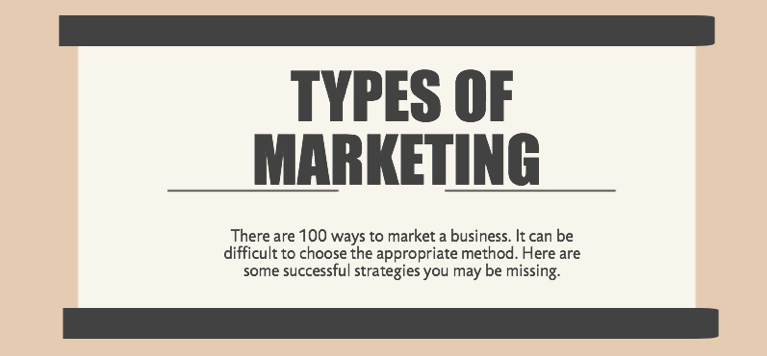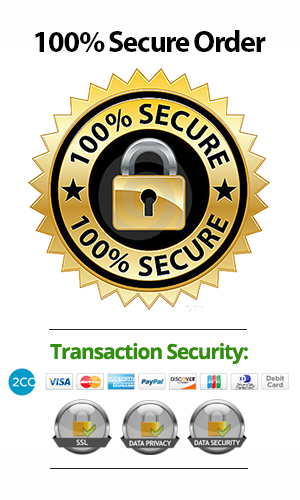If we told you that LinkedIn boasts a 2.74 percent visitor-to-lead conversion rate, would it make you consider using LinkedIn for real estate?
Yeah, it sounds pretty tiny, right? But, when compared to Facebook’s .77 percent and Twitter’s .69 percent, LinkedIn’s is positively huge.
In fact, according to Hubspot’s number crunching, LinkedIn’s conversion rate is 277 times higher than Facebook’s.
One of the reasons for this may be the fact that LinkedIn is pretty much business-oriented. No photos of kitties or what someone had for lunch or updates on family matters.
Because there are fewer social posts, “a business’ marketing posts are more likely to be noticed on LinkedIn than somewhere else,” according to Hubspot’s Rebecca Corliss.
LinkedIn for real estate – The demographics are ideal
LinkedIn’s online user numbers are paltry compared to the giants, like Facebook and Twitter. But, the 29 percent of American adults who do use the platform boast demographics that are ideal for real estate agents – far better than any other social media platform:
- The majority (77 percent) are age 30 and older
- Nearly half earn more than $75,000 per year
- Half of LinkedIn’s users are college graduates
- 90 percent of users make household decisions
These demographics neatly align with NAR’s profile of the average home seller and buyer.
So, who can you connect with on the platform? “ … home builders, construction companies, HR professionals who have to help new employees find housing, relocation services professionals — they’re all on LinkedIn,” according to John Nemo at bizjournals.com.
Not to mention that every single person on LinkedIn lives in a home and may be planning on buying or selling.
Still have your doubts about LinkedIn’s value for agents? How about some social proof to back up our claims?
“I have gotten more business from Linkedin than Facebook.” Agent Brenda Andrew, Corpus Christie, TX
“LinkedIn has become my number 2 source in driving traffic to my website.” Rochester, NY mega-agent Kyle Hiscock
“ … LinkedIn which is where most of my leads come from.” Milford, CT relocation wiz Wendy Weir
“I have received more business from LinkedIn than FB and Twitter combined.” Beverly Hills agent Endre Barath, Jr.
Let’s get you going on LinkedIn, starting with your profile
As with any social media platform, a complete, compelling profile is a must. If you’re familiar with Facebook’s profile process, LinkedIn’s will be a snap.
Start with a banner image (LinkedIn provides an image size guide here). Suggestion: Use the same image you use on Facebook.
Why re-invent the wheel? Besides, if you did the FB banner right, it includes your branding, like this one from Christophe Choo, YouTube real estate star with Coldwell Banker Global Luxury Group in Beverly Hills:
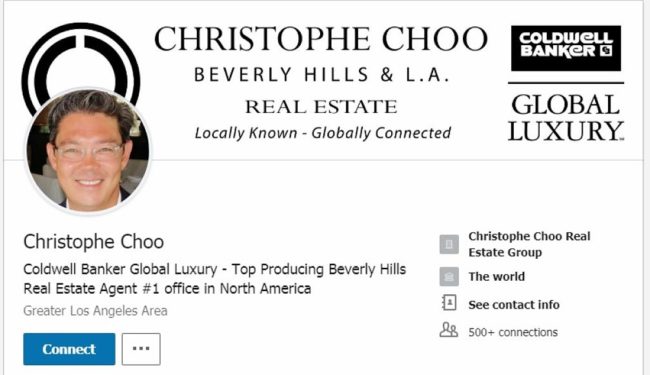
Using the same banner consistently across all of your social media platforms helps re-enforce that branding.
Or, use something easily recognizable, such as a photo of a local landmark:
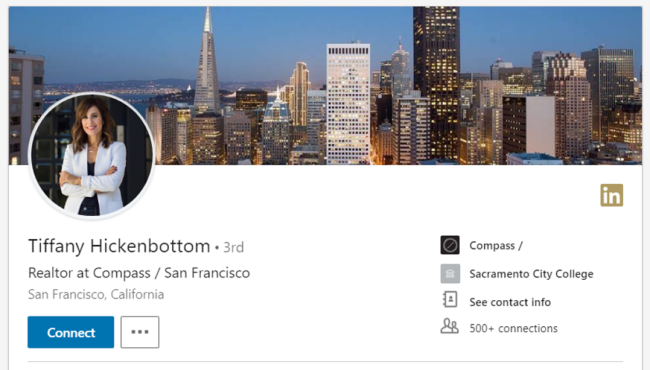
Of course, you can also add text to your banner photo — perhaps a particularly flattering testimonial or sales statistic.
When using LinkedIn for real estate, pay special attention to your professional headline (your job title).
According to eye tracking studies, the headline on your LinkedIn profile page gets the most attention from viewers.
“In fact, it got more attention than anything else on the page,” according to mashable.com’s Sarah Kessler.
Avoid the generic and go for the more descriptive. Sure, it’s fine to use “Realtor,” but consider adding other attributes of your business, separated by pipes (hold the “shift” key and hit the forward slash key, typically located above the “Enter” key):

Or, show some personality, like Austin’s Kasey Jorgenson, who slings “the finest homes”:

Optimize your summary
Your profile summary is where visitors can get to know you a little better and the ideal place to show off your real estate expertise. While most LinkedIn for real estate summaries that we’ve viewed read more like resumes, don’t be afraid to warm yours up with both personal and professional information.
Then, boost your credibility by adding one or two of your best testimonials and listing your credentials.
Remember that any text over a certain number of words will be truncated, forcing readers to click on the “read more” button. The word count is especially short in the mobile version, so place the most important information at the beginning of your summary.
Create a custom URL
Just to the right of your banner, just above the box labeled “Promoted,” you’ll find a link that will take you to an area where you can customize your LinkedIn URL.
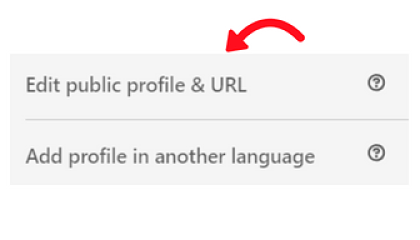
Customizing the URL makes you easier to find and it helps boost your credibility. Plus, it’s one of the easier tasks to do at LinkedIn.
Start adding content – and keep adding it
Like most social media platforms, LinkedIn loves your content, as long as it isn’t post after post about your new listings or open houses. Much like your real estate website, content matters.
Chip Leakas teaches LinkedIn seminars across the country and asked her network what they think about agents who post “ONLY listings in the activity stream. The typical response I get is:
‘On LinkedIn – Real Estate Listings look like classified ads to me and I roll right past them!’”
Kyle Hiscock agrees: “One of the biggest mistakes that agents use when posting on LinkedIn is they continually blast their newest listing,” he tells ressas.com’s Rachelle Brempong.
“This is a great way to fail at LinkedIn for real estate. The audience on LinkedIn is primarily professionals who are looking for helpful content, not the next home they’re going to buy.”
More appropriate content includes posts that provide marketing tips or topics that might attract real estate consumers. Industry news and market reports, both local and national, are also popular topics.
“I started using the articles EAP gave us – then I started writing my own – linking to others is major” as well, according to Wendy Weir.
Connect and group
So, take the time to start connecting with former and current clients, friends, former colleagues, members of organizations to which you belong, even your Facebook friends.
The experts suggest joining at least three groups on LinkedIn. Then, remain active in them.
Like anything new, LinkedIn for real estate may seem confusing at first. Concentrate on creating a brilliant profile, connecting with others and joining groups and you’ll be off and running.


